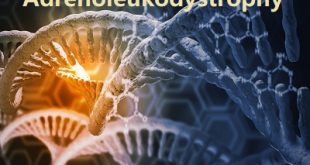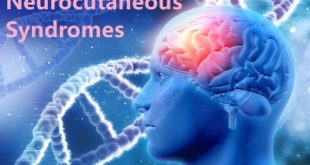Definition
Neurofibromatosis is a genetic disorder that causes tumors to form on nerve tissue. These tumors can develop anywhere in your nervous system, including your brain, spinal cord and nerves. Neurofibromatosis is usually diagnosed in childhood or early adulthood.
Neurofibromatosis
Types of Neurofibromatosis
The three types of neurofibromatosis are Nf1, Nf2, and schwannomatosis.
Type 1 neurofibromatosis (Nf1)
Also known as von Recklinghausen’s disease, von Recklinghausen NF, or peripheral neurofibromatosis, NF1 is the most common type of neurofibromatosis. It is transmitted on chromosome 17. It mostly results from a mutation, rather than a deletion, of the Nf1 gene. It is thought to affect 1 in every 3,000 people.
- Shortly after birth, birthmarks may appear in different parts of the body.
- During late childhood, lesions, or tumors, may appear on or under the skin, numbering from a few to thousands. Occasionally, the tumors become cancerous.
- Nf1 can be barely noticeable, it can be unsightly, or it can lead to potentially serious complications. Around 60 percent of cases are minor.
Type 2 neurofibromatosis (Nf2)
- Bilateral neurofibromatosis, or Nf2, normally stems from a mutation, rather than a deletion, of the Nf2 gene. It is transmittedon chromosome 22.
- Tumors form in the nervous system, generally within the skull. These are known as intracranial tumors. Intraspinal tumors may develop in the spinal canal.
- Acoustic neuromas are common, forming on the vestibulocochlear nerve, or the eighth cranial nerve.
- The vestibulocochlear nerve is responsible for hearing, and it affects the sense of balance and body position, so a loss of hearing and balance may occur.
- Symptoms tend to arise during the late teens and early 20s. Tumors may become cancerous.
Schwannomatosis
- Schwannomatosis is a rare form of neurofibromatosis, genetically distinct from Nf1 and Nf2. It affects fewer than 1 in 40,000 people.
- Schwannomas, or tumors in the tissue around a nerve, can develop anywhere in the body, except for the vestibulocochlear nerve, the nerve that goes to the ear. It does not involve the neurofibromas characteristic of Nf1 and Nf2.
- The tumors can cause severe pain, numbness, tingling, and weakness in the toes and fingers.
Risk factors
- The biggest risk factor for neurofibromatosis is a family history of the disorder. About half of people with NF1 and NF2 inherited the disease. NF1 and NF2 that isn’t inherited results from new gene mutations.
- NF1 and NF2 are both autosomal dominant disorders, which means that any child of a parent with the disorder has a 50 percent chance of inheriting the genetic mutation.
- The inheritance pattern for schwannomatosis is less clear. Researchers currently estimate that the risk of inheriting schwannomatosis from an affected parent is about 15 percent.
Causes of Neurofibromatosis
Neurofibromatosis is caused by genetic defects (mutations) that either are passed on by a parent or occur spontaneously at conception. The specific genes involved depend on the type of neurofibromatosis:
- The NF1 gene is located on chromosome 17. This gene normally produces a protein called neurofibromin that helps regulate cell growth. The mutated gene causes a loss of neurofibromin, which allows cells to grow uncontrolled.
- The NF2 gene is located on chromosome 22, and produces a protein call merlin. The mutated gene causes a loss of merlin, leading to uncontrolled cell growth.
- So far, two genes are known to cause schwannomatosis.
Neurofibromatosis symptoms
The symptoms related to NF1 and NF2 are different.
People with NF1 may have some of the following symptoms:
- noncancerous tumours under the skin (or deeper within the body)
- brown patches in the iris (coloured part of the eye) called Lisch nodules
- bowed legs, short stature, or bone abnormalities including scoliosis (an abnormal side-to-side curve in the spine)
- freckles in the groin or underarm area
- growth of a tumour on the optic nerve (an optic glioma)
- light brown flat skin marks called “café au lait” spots
Because it affects the nervous system, NF1 may cause learning disabilities, speech problems, and delays in an individual’s development. Seizures, eye tumours, and high blood pressure may also affect people with this condition. Rarely, the tumours may become malignant (cancerous). In some cases, tumours may also affect organs within the body.
People with NF2 develop tumours that appear on the nerve that connects the ear to the brain. These tumours are also called “schwannomas”. Because of their association with the ear, tumours on this nerve may cause hearing difficulties. Other complications related to the ear may include dizziness, ringing in the ears (tinnitus), and balance problems. The pressure from the tumours on other nerves may also cause headaches or numbness of the face or weakened facial muscles.
People who have NF2 may also develop tumours in other body areas, such as the brain and spinal cord. Unlike NF1, skin discoloration and freckles are few or nonexistent in people with NF2. Cataracts can develop early in life, which may cause vision difficulties or blindness.
Complications
Complications of Nf1
Vision and hearing problems can occur if a tumor, or neuroma, presses on the nerves leading to the ears or eyes. Children may experience learning and behavioral challenges as a result. Around 50 percent of children with Nf1 face learning challenges. Short-term memory, spatial awareness, and coordination may be affected.
Other complications of Nf1 include:
- Epilepsy
- Large head size
- Benign skin tumors that, in a few cases, may become cancerous
- Curvature of the spine, or scoliosis
- Gliomas, or tumors on the eye nerves, occasionally causing eyesight problems
- Hypertension
- Problems with speech
- Short stature
- Skeletal problems
There may be early or late sexual development and puberty.
Complications of Nf2
- People with Nf2 can develop benign skin tumors, similar to those characteristic of NF1. These should be monitored in case they get bigger, change, or cause pain.
- Benign brain tumors may put pressure on parts of the brain and cause convulsions, eyesight problems and balance problems. Some become cancerous.
- Spinal cord tumors may develop on the nerves surrounding the spine, resulting in trembling, numbness, and pain in the limbs. Tumors around the neck area may cause facial problems, for example, difficulty with smiling, blinking, or swallowing.
Diagnosis and test
NF1 often can be diagnosed based on physical examination. Your doctor may use a special lamp to check your skin for cafe au lait spots. A physical examination and family history are also important for a diagnosis of NF2.
Your doctor also might recommend:
- Eye exam. An eye doctor can detect Lisch nodules and cataracts.
- Ear exam. Tests such as audiometry, electronystagmography and brainstem auditory evoked response can help assess hearing and balance problems in people with NF2.
- Imaging tests. X-rays, CT scans or MRIs can help identify bone abnormalities, tumors in the brain or spinal cord, and very small tumors. An MRI might be used to help identify optic gliomas. Imaging tests are also often used to monitor NF2 and schwannomatosis.
- Genetic tests. Tests to identify NF1and NF2 are available and can be done prenatally. Ask your doctor about genetic counseling. Genetic tests for schwannomatosis are limited.
Treatment and medications
Treatments for both types of NF are aimed at controlling symptoms. NF tumors are not always treated because they:
- Grow slowly
- Are rarely cancerous
- May not cause problems
If you have NF, you will need regular exams to check for:
- Tumors
- Brown spots on the skin
- Bones, including scoliosis
- Hearing
- Vision
Treatment of NF1
Surgery can help correct some bone abnormalities. Bone surgery may be combined with back braces to treat scoliosis. Surgery can also be used to remove painful or disfiguring tumors. However, tumors may grow back and in larger numbers. In rare cases when tumors become cancerous, treatment may include:
- Surgery
- Chemotherapy
- Radiation
Treatment of NF2
Surgery can remove tumors, but it may damage the nerves. If the nerves to the ears are damaged, hearing loss can occur. Other treatment options include:
- Partial removal of tumors
- Radiation
- MRI scans of the brain can locate tumors when they are small. This allows treatment to be started early.
Prevention
At this time, no means exist for the prevention of neurofibromatosis. The best hope for preventing NF lies in identifying the underlying causes of genetic mutations. For people with a family history of neurofibromatosis, genetic counselling may be helpful in family planning. Those individuals are also encouraged to have annual eye exams by an ophthalmologist familiar with NF, as well as check-ups by a doctor who is informed about the potential for the disorder.
 Diseases Treatments Dictionary This is complete solution to read all diseases treatments Which covers Prevention, Causes, Symptoms, Medical Terms, Drugs, Prescription, Natural Remedies with cures and Treatments. Most of the common diseases were listed in names, split with categories.
Diseases Treatments Dictionary This is complete solution to read all diseases treatments Which covers Prevention, Causes, Symptoms, Medical Terms, Drugs, Prescription, Natural Remedies with cures and Treatments. Most of the common diseases were listed in names, split with categories.








I have a problem with my foot and undergo an operation some yrs bk but the swollen is bk what do i do?
Consult a doctor to get rid of the pain.
Can’t it be permanently be cured?, are there any type of food a patient should continually take to limit tumors growth?
It cant be permanently cured.
Is there anything to do to limit tumors growth?
NF tumors are not always treated because of they:
Grow slowly
Are rarely cancerous
May not cause problems